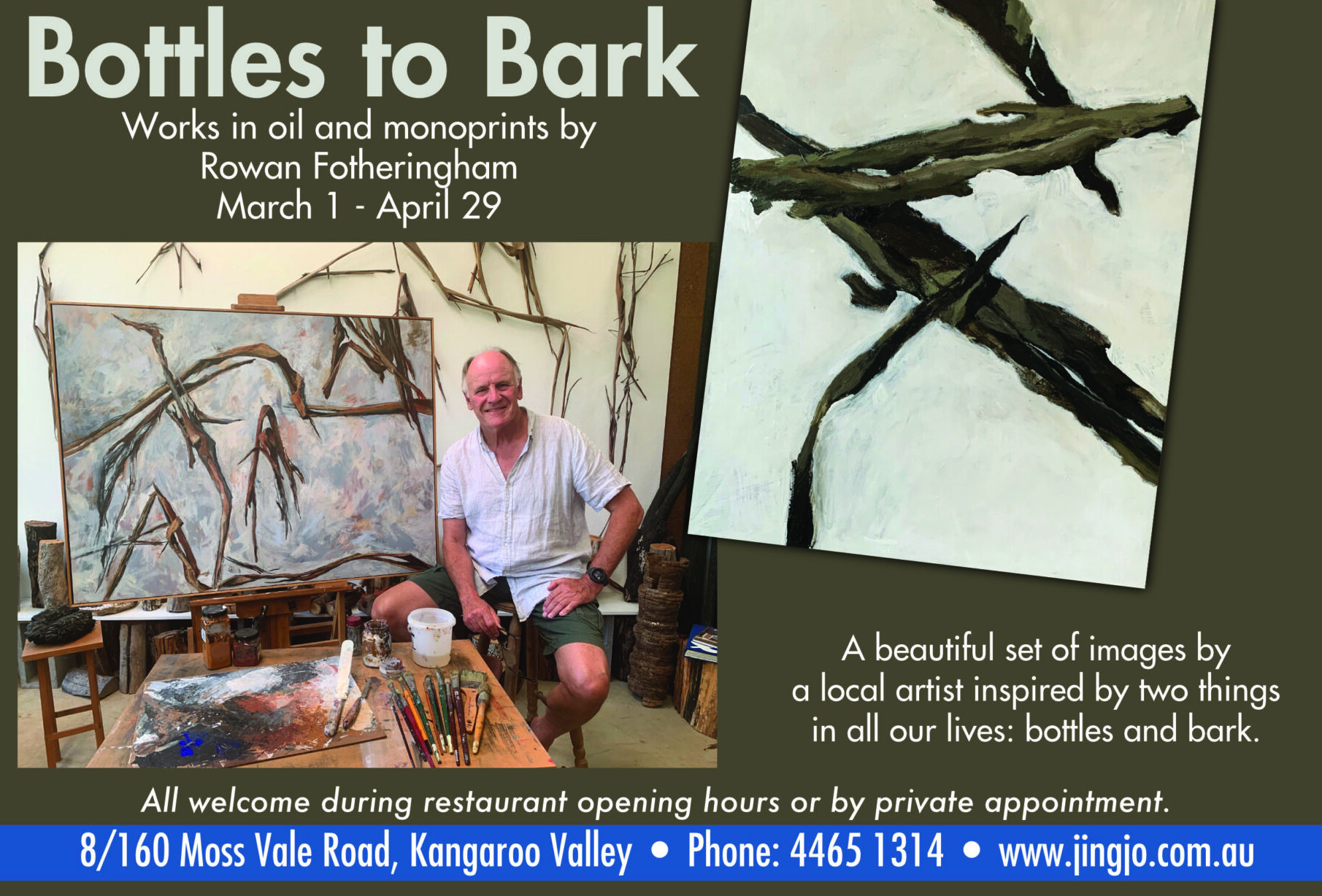“How things were done in George Walker’s day”. The Walker Bridge, a beautiful and historic suspension bridge, was built in 1931 by George Walker, a local dairy farmer. George needed to get across Broger’s Creek, the largest tributary of the Kangaroo River, from his home to the road. His only access was over a ford which was often in flood for weeks on end. It took George three months to complete the bridge, between his daily milking sessions , hard manual work and running the farm. His achievement was truly remarkable. He used bullocks to drag the timber of about 25 feet long for the hug wooden pylons. The cutting of the trenches for the pylons and anchor points were all dug out by hand. Concrete for the foundation was mixed with a shovel.
With none of the benefits of modern mechanical aids, the Walker Bridge was built having a length of 206 feet from one anchoring point to the other. Between the enormous pylons which support the suspension cables the distance is 140 feet. The centre of the bridge sat 24 feet above the river bed and the deck was 9 feet wide – wide enough to carry trucks, tractors and the milk runabout, anything up to two tonnes weight, including his Model T Ford car.
The Shire Council had recently built a concrete bridge 200 yards up the river from the Walker Bridge, so Professor John Griffith and Gib Lidbetter conceived the idea of getting the bridge transferred from its former site to provide a connecting link, across Tanner’s Creek, to the Kangaroo Valley Museum’s five acres of walking track and another 21 acres of public reserve. The bridge was donated by John Walker, George’s son.
The first stage of the dismantling of the bridge took place on 19 March,1977. The turpentine pylons, which were the main part of the structure at the south end of the bridge, were enormous. The logs were found to be “as sound now as they were when used for the original construction in 1931.”
Equally sound was the large cross-beam connecting the two pylons at the top and over which were stretched on each side three 220 foot lengths of 3/4 inch steel cabling. This beam had been expertly morticed and tenoned into the pylons. The original steel droppers were also incorporated in the reconstruction of the bridge. Care was taken to recover as much as possible of the original material so that the re-constructed bridge would be, as far as possible, a replica of George’s bridge built 46 years before. The only difference is that the reconstructed bridge, at the Kangaroo Valley Museum, has been built for pedestrians only and so is not as wide as the original bridge. The Walker Bridge is a permanent memorial to all pioneers who, in their day, did so much with their own hands and without the assistance from government authorities.
The guiding plan was drawn up by Mr Bill Woods in the Shire Engineer’s Department and everything was done to reconstruct the bridge by Kangaroo Valley people with local materials and mostly voluntary labour, including 14 boys from Bomaderry High School. Mr Wran, The Premier of NSW at that time, opened the bridge on Sunday 31 July, 1977, watched by more than 1000 people, many dressed in period costume. And the day before, on Saturday 30 July in the Kangaroo Valley Hall, the event was celebrated by a Bushwacker’s Ball of old time dances and a display of square dancing.
Sadly, George Walker drowned in Broger’s Creek on 5 August, 1956.
Christine Murphy




